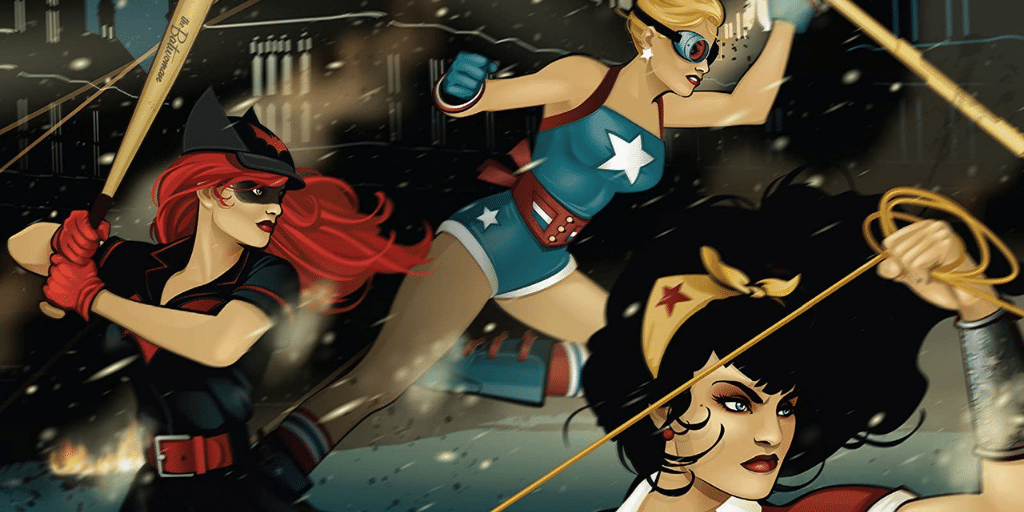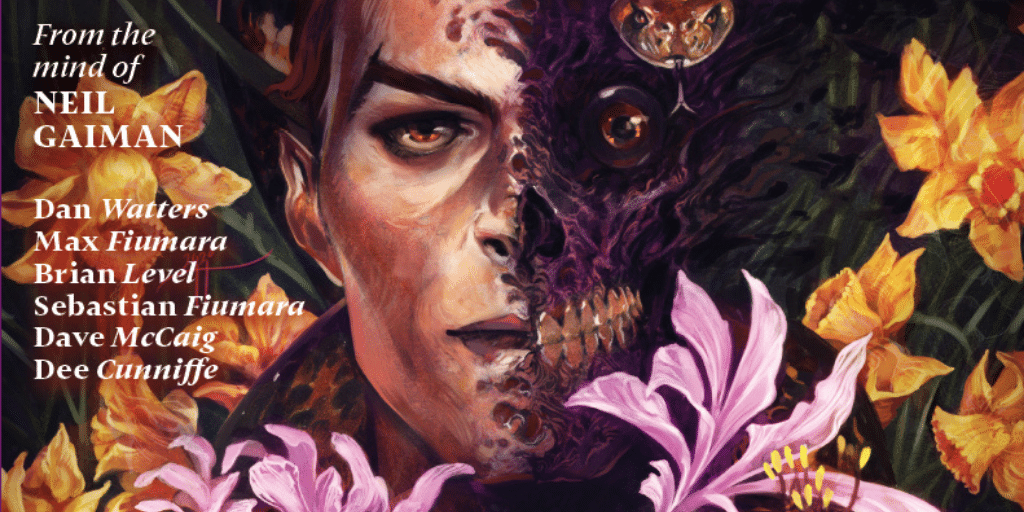
People like to say the X-Men have the most complicated backstory and continuity in comics. And that might be true. For Marvel Comics.
But at least a tie for messiest history would have to be DC’s Legion of Super-Heroes, the teen team from the future. And that’s not even factoring in that we’re on our … fifth iteration of the Legion at least. When a story takes place 1,000 years in the future, and it is built on the foundation of modern continuity, things can get messy.
Legion fandom is a peculiar thing as well. Legion fans are diehards through and through; it’s rare to meet a casual one. I first became a regular Legion reader during Dan Abnett and Andy Lanning’s pre-”Guardians of the Galaxy” run, when the Legion faced Ra’s al Ghul, because Bat-villains are my Kryptonite. And since then, I’ve explored various facets of Legion history and developed a few favorites.
This week, Brian Michael Bendis and a murderer’s row of top artists began a two-part story where each page is an “issue one” focusing on a different Legionnaire, and so I thought I’d write about four Legionnaires who are either favorites or who really show how much glorious comic book nonsense you can cram into a Legion story.
Lightning Lad

Based on the typical character type I like (Batman, Cyclops), you’d think my favorite Legion founder would be Cosmic Boy. After all, he’s the leader, the responsible one. But no, my favorite original Legionnaire is the hot-headed Lightning Lad.
I think a lot of that has to do with the origins of the two heroes. Cosmic Boy’s was simple: He was a sports star who wound up becoming a superhero, which is a little more of a jock origin than I go for. Lightning Lad had a more interesting story. Garth Ranzz was from the planet Winath, where nearly the whole population was born with a twin. His elder brother, Mekt, was one of those rare singletons, and he mercilessly picked on his little brother Garth and Garth’s twin, Ayla. The three were on a ship that crashed on the planet Korbal, where they were all attacked by Lightning Beasts and given lightning-based powers.
So, with that, you have a hero with an interesting origin and a built-in arch enemy in his crappy brother. And Lightning Lad was one of the first heroes to die in comics, even though he got better. He lost an arm. He married his sweetheart, fellow Legion founder Saturn Girl, and they had kids. I like a hero who grows and changes.
And it’s with those kids that we get one of those great instances of glorious comic book nonsense. You see, the greatest Legion story of all time, their “Dark Phoenix Saga” was “The Great Darkness Saga,” where the Legion fought Darkseid. And Darkseid swore revenge on his foes. So when Saturn Girl gave birth, Darkseid took one of the twins, sent the baby back in time and transformed the child into the mindless monster Validus, a member of the Legion’s enemy team, the Fatal Five. Yes, it’s basically an anti-Cable, with the baby being taken back in time and made evil, versus forward in time and saved.
Star Boy

Picking Star Boy as one of my favorite Legionnaires is kind of a cheat, because I am a fan of the character mostly for his adventures in the 20th/21st century, a byproduct of his time-travelling adventures that had him encounter the Justice Society and Jack Knight, the seventh hero called Starman.
Thom Kallor was a native of the planet Xanthu who was mutated by stellar radiation and given powers over gravity. He was just sort of a typical Silver Age “golly-shucks” sort of hero, a generally good guy who did the right thing for the right reasons. He had a relationship with fellow Legionnaire Dream Girl, and the two had their ups and downs in the original continuity.
When the Legion was rebooted, Star Boy didn’t change much. But when Jack Knight, the hero of James Robinson’s “Starman” series, traveled into the future, he met a few Legionnaires, including Star Boy. And then Thom learned he was destined to travel back to the 21st century, take up the name Danny Blaine and be the next Starman after Knight. It was an interesting little bit of predestination, and something I watched for. Well, until that reboot Legion sort of faded away, to be replaced by the new, “threeboot” Legion, where Star Boy was Black (Yay for diversity!) and suddenly had no ties to the old “Starman” material (Boo for him not going back in time!).
But eventually, a Danny Blaine/Thom Kallor did appear in the past, in the pages of Geoff Johns’ “Justice Society of America.” This Thom was different. Through a series of universe-hopping adventures, this Thom had been sent back in time by the Legion but made a stopover in the alternate reality of Earth-22, where “Kingdom Come” was set. He would spend time with the JSA, working with them and with the Superman of Earth-22, who travelled over to the main DCU for a bit, before returning to his future during the “Final Crisis: Legion of 3 Worlds” event.
On top of all that, Thom has the mental condition borderline schizophrenia. Now, I think it’s fair to say that comic books have a … poor at best history of dealing with mental illness; see Arkham Asylum for an example. But with Thom, Johns and a handful of other writers tried to be respectful of the condition, and show him trying, and rarely as a gibbering madman or a rage-filled monster. The stories weren’t always successful, but the attempt, both at inclusion and proper representation, is far more than has been attempted in the past, and for those who deal with mental disorders, that matters quite a bit.
Dawnstar/Shikari

In the ’70s, the Legion was expanding, and the various creators were trying to make the team, which had been entirely white since its inception (Well, except Brainiac 5, who was green, and Shadow Lass, who was blue) more diverse. This met with some … mixed results. Karate Kid was half Japanese but looked white and his background was full of Asian stereotypes. Tyroc, the first Black Legionnaire, was a member of a Black separatist island and had sonic powers; he was basically an angry Black twenty-something who shouted.
And then there was Dawnstar. Dawnstar was from Starhaven, a planet where Indigenous people went after they abandoned Earth, and grew wings. They wore a lot of fringe, and Dawnstar had tracking powers. This is not a great look. Points for trying, sure, but leaning into those Native American stereotypes wouldn’t fly in the here and now. In all fairness, she was assigned an actual tribe, the Anasazi, versus just being “an Indian,” as was often what happened at the time, so it’s one of those balancing acts that didn’t quite balance.
Dawnstar would appear as a Legionnaire regularly throughout the original incarnation of the Legion and had a prominent role in “Crisis on Infinite Earths.” But when the Legion was rebooted … there was no Dawnstar. Instead, an alien with the ability to find paths through space named Shikari Lonestar appeared in the “Legion Lost” arc, written by Abnett and Lanning, with early art from Olivier Coipel. This did get rid of the more tone-deaf aspects of the character, but also removed one of the few characters from the DCU that was from an Indigenous tribe. It’s never been confirmed that Shikari was the Dawnstar analogue for the reboot Legion, but the connection seems too obvious to be a coincidence.
I didn’t know much about Legion lore at the time, and Shikari struck me as a cool character with a great design. With the more recent incarnations of the Legion, the original Dawnstar returned, though without some of the weird, stereotypical fringe, which seems good.
Mon-El

Mon-El, or Lar Gand of Daxam, or Valor, is the poster child for complicated time travel nonsense in the DC Universe. Even if you’re not a Legion fan, there’s a chance you know Mon-El from his appearances on the Arrowverse “Supergirl” TV series, but his comic book history is so much more complicated than that show ever would have attempted to touch.
Mon-El first appeared in “Superboy” #89, where a spaceship crashed on Earth, and Clark Kent assumed the young inhabitant was another Kryptonian. Taking him in and giving him the name Mon-El (Mon from Monday when he was found, El for Clark’s Kryptonian surname). Only Mon-El wasn’t Kryptonian, but instead a Daxamite, an alien species descended from Krpytonian settlers who have developed different weaknesses over the years, specifically to lead. With Lar Gand (his real, Daxamite name) dying, Clark banished Mon-El to the Phantom Zone, where he could stay, incorporeal and immortal, until a cure for his lead poisoning could be found.
That cure was found by Brainiac 5 in the far future of the Legion, where Mon-El was retrieved and made a full Legionnaire. He would be a member of the Legion for years, until Crisis on Infinite Earths changed everything.
You see, Crisis changed history in such a way that Superman was never Superboy; he kept his powers hidden until he came to Metropolis. So how does Superboy then inspire the founding of the Legion? Well, first you have some convoluted plot about a pocket dimension (since there were no more alternate Earths) created by Legion villain the Time Trapper and a Superboy there. But that’s straight up convoluted nonsense, so instead it was decided to shift the inspiration. Lar Gand, who never came to Earth as a youth, instead comes to Earth as part of the crossover “Eclipso: The Darkness Within, takes on the superhero name Valor, gets his own short-lived series and seeds the various worlds that many Legionnaires come from with colonists. He is now a big damn hero, and the inspiration for the Legion.
But back in the early 2000s, Johns reintroduced the concept of Superboy and brought back the original Legion. So what happened to Mon-El? He got his original origin back, was released from the Phantom Zone with a temporary antidote in the present to sub in for Superman while he was off on New Krypton, and then went back into the Phantom Zone to be revived by the Legion, and things were back to the original status quo. Lar has appeared in the new Bendis series but has not had one of the handy little tags that reveals his name and powers, so I imagine there’s a mystery to be resolved there, and maybe we’ll find out this week. But it’s not going to make his history any less convoluted.
Matt Lazorwitz read his first comic at the age of 5. It was Who's Who in the DC Universe #2, featuring characters whose names begin with B, which explains so much about his Batman obsession. He writes about comics he loves, and co-hosts the podcasts BatChat with Matt & Will and The ComicsXF Interview Podcast.






